Description
How the Tour de France reluctantly embraced derailleurs
The Tour hesitated for 34 years before allowing the use of derailleurs. Since their introduction, everything has continued to evolve.
By Jean-Paul Vespini, Velonews.com, June 23,2017
Henri Desgrange had a reputation for pushing racers to their limits. The boss at L’Auto and original organizer of the Tour de France regularly barred riders from using new bicycle technology, fearing the gear would make the race too easy. In fact, Desgrange didn’t allow riders to use derailleurs until 1937, nearly 34 years after the invention of the gear-changing mechanism. Why did he so adamantly refuse a technological advance that had been around for decades? The Frenchman feared that derailleurs would even the playing field for everyone in the peloton. More than anything, Desgrange wanted to see riders suffer as they battled each other over excruciating stages.
Philippe Thys, the Tour winner in 1913, 1914, and 1920, readily admitted: “We were aware of ‘Father’ Desgrange’s desperation. There were moments when we felt he had the crazy desire to make us ride flat-out all the time.”
Banning the derailleur wasn’t the only way in which Desgrange tinkered with the race and its technology. In 1913 he required riders to tackle the Brest-La Rochelle stage — all 470 kilometers of it — with a fixed gear, which requires riders to constantly pedal. At the time there were already systems available to change gears, as well as freehubs, which allow riders to coast. In fact, some riders in the isolé (individual) class were allowed to use a derailleur. (In 1912, for instance, Joanny Panel competed with a bike equipped with a Le Chemineau derailleur, one of the very first models, which he had perfected himself.) But Desgrange didn’t want to allow that on this day in 1913. So fixed gears it would be.
Ultimately, pressure from manufacturers, who were keen to develop their products, changed his mind. Desgrange was forced to allow derailleurs in 1937. Eighty years later, this decision may seem obvious. In the moment, the decision required some courage. Some riders were also reluctant to use a mechanism that they felt forced them to spin their legs too much. At the time, mashing big gears was the style.
The cycling press was also wary of the derailleur. A clip from the July 23, 1937 edition of L’Intransigeant states: “It says in the yellow pages [in other words, L’Auto – Ed.] that the introduction of the gear-changer will mean that the riders won’t wreck themselves physically and will all use the same gears. That’s not on! That should actually be a black mark against the derailleur. As we’ve previously said, the derailleur reduces everyone to the same base level. There is no need to adopt it at the Tour. That’s our belief, and even the race organizers already seem to be regretting it.”
For the 1937 Tour, organizers selected the Super Champion derailleur to be used by all participants. Turin-based Vittoria designed the mechanism; champion racer Oscar Egg, who had broken the hour record three times and gone on to open a bike shop in Paris, then modernized it. The derailleur was characterized by a derailing fork mechanism at its base that moved the chain up and down on the rear sprockets.
Around this same time, the more advanced Vittoria Margherita became popular in Italy. Gino Bartali won the 1938 Tour using one. However, these models had one drawback: riders had to push gently back on the pedals to enable a change of gear.
In late-1930s France, Simplex’s Champion du Monde model dominated the market. Invented by Lucien Juy, it was the first that didn’t require back-pedaling. Many champions adopted his Tour de France model, including Fausto Coppi who won the 1949 Tour using one.
Next, Tullio Campagnolo invented the quick release mechanism in 1930 and perfected the derailleur during the 1940s and ’50s. Hugo Koblet used his steel Gran Sport model to ride to victory in the 1950 Giro. Campagnolo proved again he was ahead of his rivals when he introduced his Tour de France model. It featured the universally hailed parallelogram rear design, which was more precise, faster, quieter, and more functional.
In the 1960s and ’70s, the Vicenza-based company became the undisputed market leader with its Record and Super Record models. From this point on, the front derailleur, which appeared in the post-war years, offered riders a choice of gear ratios to suit all terrains. Consequently, the Tour de France organization was able to tinker with the race route to take advantage of the ever-evolving technology.
Though organizers took the race into the mountains before the adoption of the derailleur — the Tour route first included the monstrous Col du Tourmalet in 1910 — its continued development brought significant changes to the parcours. The race could now include summit finishes; Alpe d’Huez first appeared in 1952. Also, many more time trial stages were added: Rather than resorting to adding extra rest days, organizers began to use time trials to boost average speeds and give an extra competitive edge to the race.
Throughout the development of the derailleur, there were simultaneous advancements made to the cassette. In the 1930s there were three-sprocket rear cassettes; they jumped to five in the 1950s, then to eight in the 1960 and ’70s, and to 11 today. Thanks to the increasing number of sprockets, riders could choose the gear they wanted with greater precision.
In the 1980s, gear shifting made another leap forward. Shifters began to appear on brake levers. Shimano’s SIS system made shifting more convenient and safer. In 1992, the first electronic derailleur, Mavic’s Mektronic, made its debut. For an experienced rider, the electronic systems provide comfort and options.
“Although, initially, you didn’t feel as if you could go flat out when attacking as you changed gear, nowadays you certainly can. You can change gears in several positions,” says Thomas Voeckler.
Naturally, manufacturers have invested a lot of time in this niche area. Claudio Marra, CEO of Full Speed Ahead Europe, says the fluid shifting of the electronic gadgets is just one of the reasons why professionals prefer the new systems. “Riders also appreciate the data that’s stored in its sensor: How many times has a rider changed gear? What gears did they use? We’ve entered the realm of the future,” Marra says.
In other words, once shunned, the derailleur has now become an indispensable ally for a rider.
********************************
All of the postal cards on our site are original, with no reproductions.
As many of the cards are quite old and one-of-a-kind, please look carefully a the photos to determine their condition.
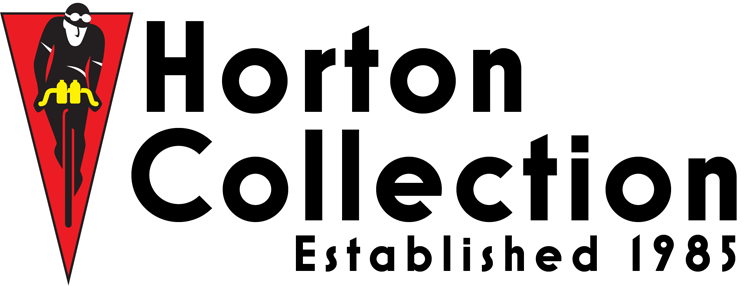

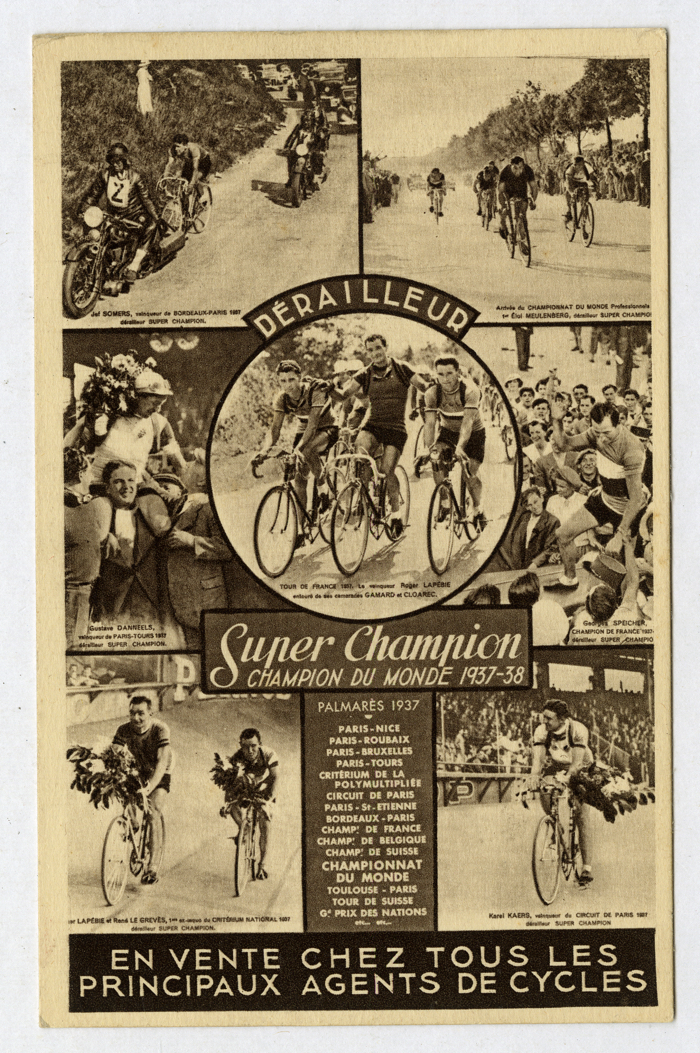
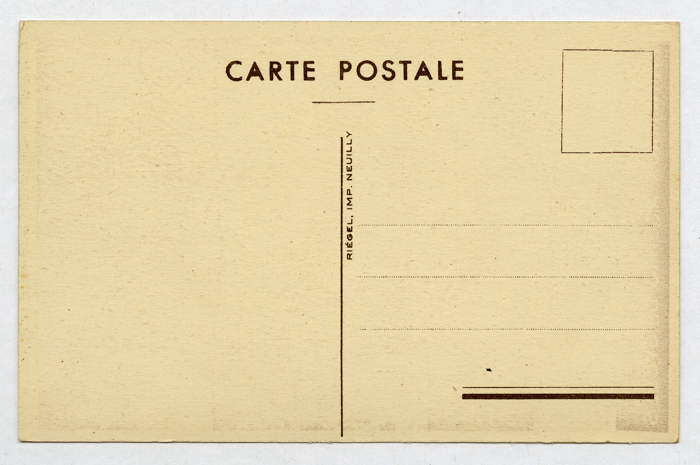
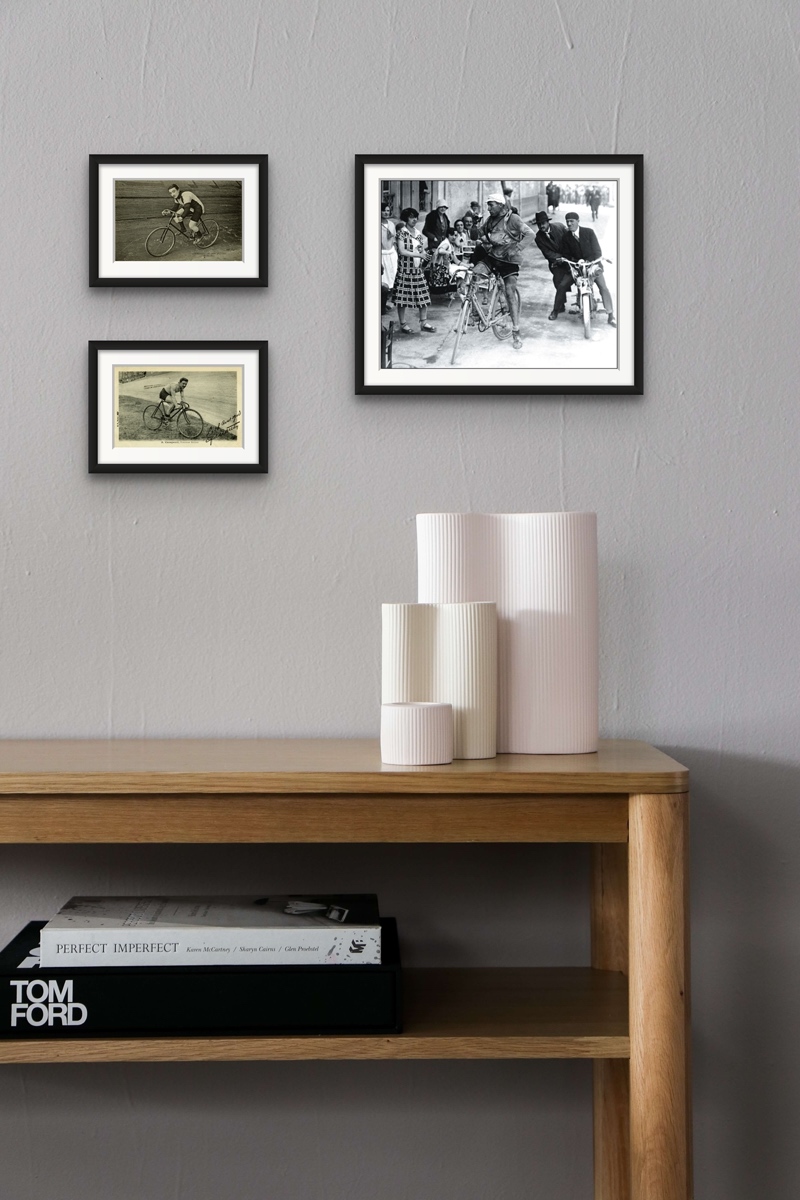

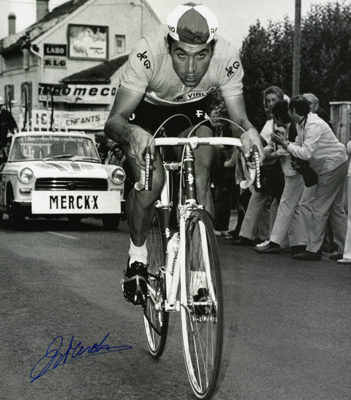
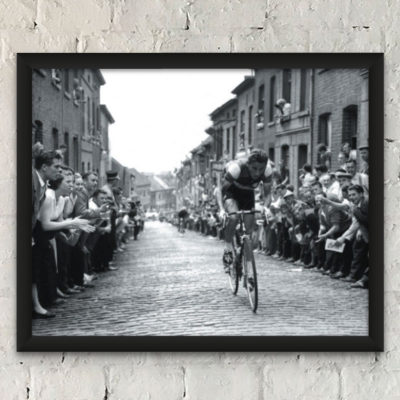
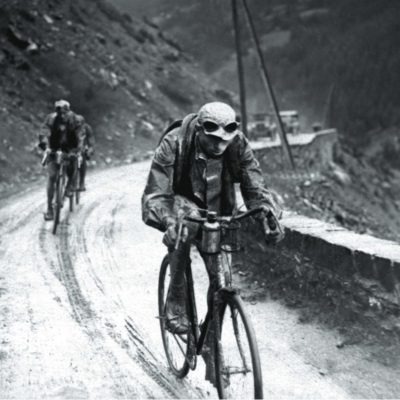
Recent Comments